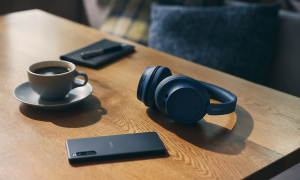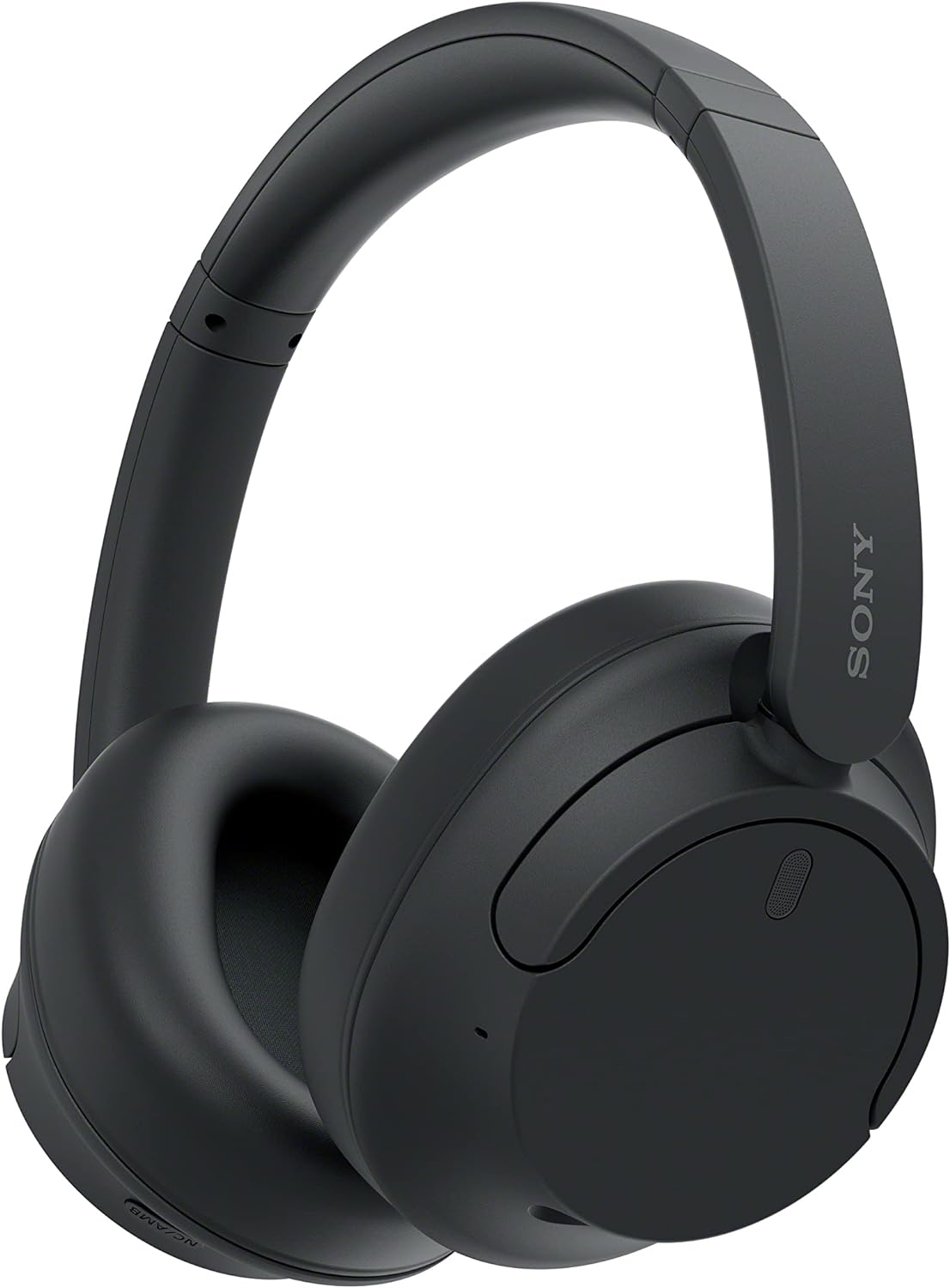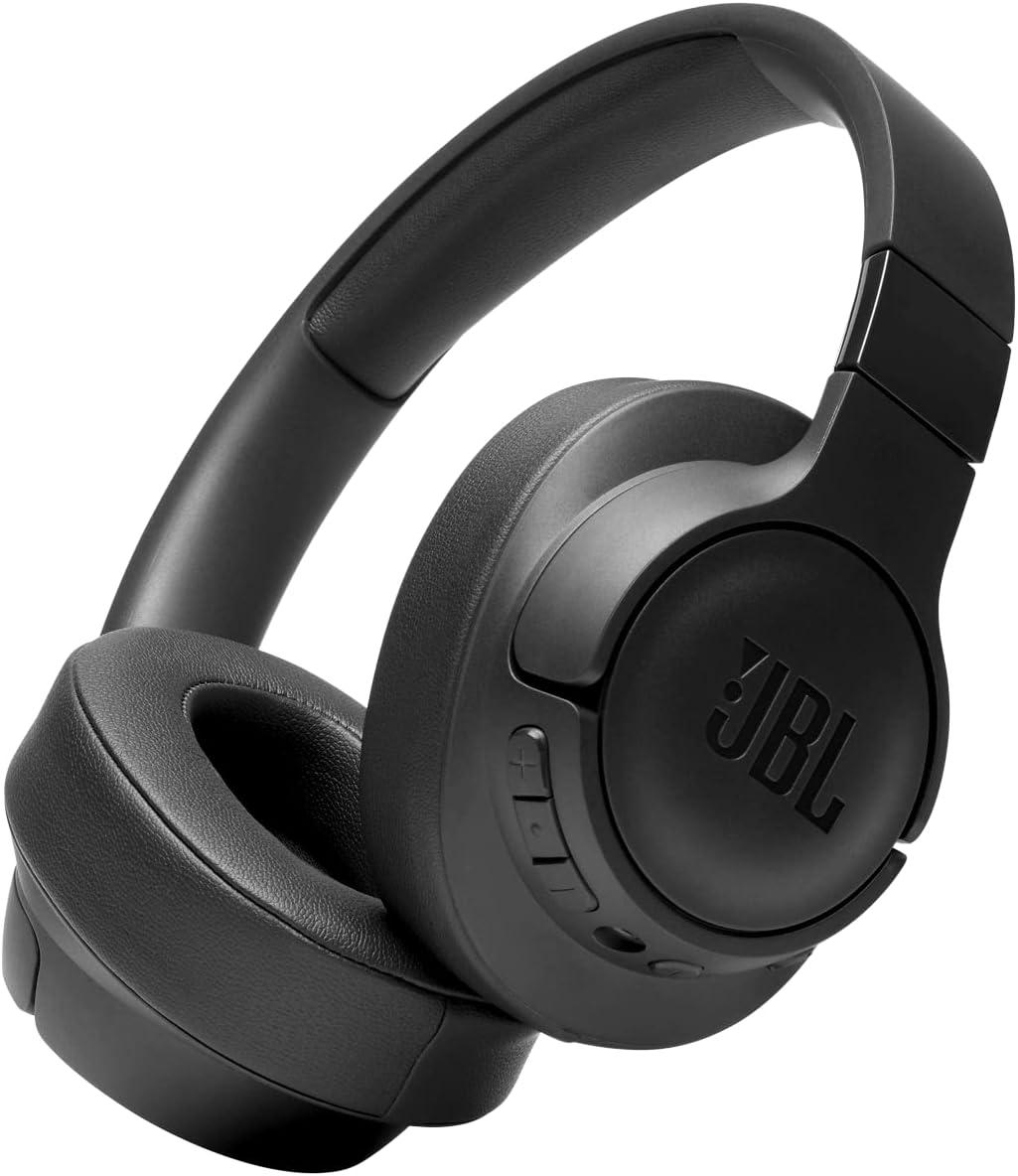Let’s be honest—finding the right wireless headphones today can feel like flipping a coin. Specs look similar, prices hover in the same ballpark, and the promises are all about rich bass, long battery life, and smart noise cancelling. But the truth is, when you actually put them to the test—wear them on a crowded subway, during a video call, or just lying on the couch—it’s the small details that reveal the real winner.
We’ve been using the Sony WH-CH720N and the JBL Tune 760NC, and at first glance, they’re suspiciously alike. Over-ear, wireless, active noise cancelling, and surprisingly affordable. But dig a little deeper, and you start seeing clear differences. So if you’ve been hesitating between these two, hang tight—we’re breaking it down to help you make the right call.
Similar look, but one is noticeably lighter on the ears

If you’re into headphones that keep things low-key, both of these deliver. The WH-CH720N and Tune 760NC both use a circumaural design, which means they wrap completely around your ears for better sound isolation. Minimal branding, clean lines, and foldable builds make them travel-friendly—though neither one includes a carrying case, which is kind of a letdown if you’re used to toting them around.
Now here’s where the first comfort detail creeps in. Sony’s WH-CH720N weighs just 192 grams, and you can feel it. Compared to the 220 grams of the JBL Tune 760NC, that 28-gram difference is real, especially after an hour or two. It’s the kind of weight you notice when your neck starts feeling sore on a long train ride.
Color options are pretty close, with black and white versions for both. Sony also throws in a calm blue, while JBL mixes it up with a punchy pink. It’s not a major feature, but if you care about aesthetics, that small extra choice might sway you.
Noise cancelling: they both block sound, but one listens better
It’s no longer rare for budget or mid-range headphones to include ANC. Both the WH-CH720N and Tune 760NC cancel out environmental noise using dual microphones per earcup. They’re solid performers on a plane, bus, or in a noisy café, reducing hums and chatter to manageable levels.
But Sony doesn’t stop there. The WH-CH720N also includes ambient sound mode, spatial audio, and adaptive sound control, which are rare in this price range. Ambient mode lets you hear the outside world when you want to, perfect for when you’re walking around the city or waiting for an announcement. Adaptive sound control automatically adjusts your audio settings based on where you are and what you’re doing—walking, sitting, or even running errands.
And spatial audio? It creates a wider, more immersive soundstage, especially useful for watching movies or live recordings. These extra tools mean Sony’s model doesn’t just block sound—it responds to your environment.
JBL’s Tune 760NC doesn’t offer any of these extras. Its ANC works just fine, but you’re left doing manual tweaks whenever the context changes, which isn’t exactly convenient when you’re switching from your desk to the street.
Sound quality: the bass has more space to breathe
Here’s where things get interesting. Both headphones deliver punchy audio, and unless you’re a sound engineer, you might be happy with either. But under the hood, the Sony WH-CH720N supports a frequency range from 7 Hz to 20,000 Hz, while the JBL Tune 760NC starts at 20 Hz and also goes up to 20,000 Hz.
That might sound like a minor difference, but those extra low-end frequencies give Sony the ability to reproduce deeper bass textures, especially in tracks with layered beats or cinematic mixes. It’s not necessarily bass-heavier—it’s just more detailed. Sub-bass and rumbling effects sound tighter and more controlled.
Across the rest of the spectrum, both offer clear mids and crisp highs, but Sony feels more nuanced on complex arrangements—think jazz, classical, or electronic tracks with a lot going on. JBL still sounds good, but in a more direct, less refined way. It hits hard but doesn’t always show the finer edges.
Battery life: tied, but charging speed tells the story

Battery life is a non-issue here—both headphones offer up to 35 hours of playback with ANC turned on, and up to 50 hours with ANC off. That’s impressive, especially considering some pricier models struggle to reach that kind of endurance.
Where they do diverge slightly is in how fast they recharge. JBL charges fully in around 2 hours, while Sony needs about 3.5 hours to hit 100%. But—and this is key—Sony gives you 1 hour of playback from just a 3-minute charge, which is a lifesaver when you’re about to leave the house. JBL gives you 2 hours of playback from a 5-minute charge, which is also solid.
So in the end, if you’re someone who constantly forgets to charge their gear, that fast-charge feature could be a small but crucial factor.
Connectivity and controls: upgrades that quietly make life easier
Bluetooth version might not sound glamorous, but it matters. Sony supports Bluetooth 5.2, while JBL sticks with version 5.0. In practice, Bluetooth 5.2 offers more stable connections and improved battery efficiency, especially when connecting to multiple devices.
And speaking of that, both models support multipoint pairing, so you can stay linked to your phone and laptop at the same time. It’s seamless—you get a call on your phone, and it pauses your movie on the laptop automatically. Once you’re done, playback resumes. It feels like magic when it works well—and both deliver.
Controls on both headphones are old-school, and we kind of love it. Physical buttons over touch panels mean fewer accidental pauses or skips, especially when you’re wearing gloves or moving around. Voice assistant integration? Yep, it’s there. You can trigger Google Assistant, Alexa, or Siri depending on your device, and both models respond reliably.
Real-world performance: one thinks ahead, the other waits for your input
Let’s talk real-life use. Say you’re walking through a busy street, then hop on the train, then walk into a coffee shop. With the Sony WH-CH720N, adaptive sound control kicks in and adjusts the ANC or ambient mode automatically, based on your movement and surroundings. It’s like having a personal audio assistant following you around.
The JBL Tune 760NC doesn’t adapt on its own. It sticks with whatever setting you last used. Which works—but it also means more button-pressing, more tweaking, and more attention from you.
That’s the difference: Sony anticipates, JBL waits.
Bonus features and app support: Sony has more to play with

Both headphones connect to companion apps—Sony Headphones Connect and JBL Headphones—and allow for EQ adjustments, firmware updates, and device settings. But here’s where Sony flexes again.
Sony’s app offers more in-depth control, including 360 Reality Audio support, ambient sound levels, and adaptive sound triggers. You can even fine-tune how wide or narrow you want the soundstage to feel. JBL’s app, while clean and easy, is more limited in scope.
Also worth noting: neither model includes a hard-shell case, and both use a standard USB-C charging cable, which is great for compatibility.
One of these headphones gets smarter the more you use it
After hours of switching back and forth, the choice becomes clearer—not because the JBL Tune 760NC fails, but because the Sony WH-CH720N just offers more layers of experience.
That lighter frame, wider frequency range, and smarter sound adaptation make a real difference. It’s not flashy, but it’s functional in a way that feels thoughtful. The WH-CH720N learns your habits, reacts to your environment, and tailors your audio in ways the JBL just can’t.
That said, if you’re after simplicity, the JBL is easy to recommend. It sounds good, lasts long, and doesn’t throw a thousand options your way. It’s direct and effective—no fuss.
But once you’ve used the Sony WH-CH720N in everyday life, especially in noisy or changing environments, going back feels like giving something up. It’s not just another pair of headphones—it’s headphones that know how to listen with you.


